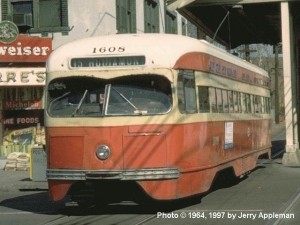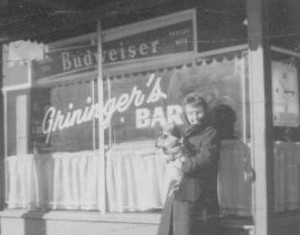The Wellston Loop: The Golden Years of the Community
After World War I and well into the 1950s, Wellston reached a golden era – a very dynamic time for the community. During this period, it reached a tremendous height of popularity as a shopping, business, and transportation district.
“A community for which there are no official census figures has, perhaps, the largest population in the St. Louis suburban empire,” claimed one writer in 1946. “Vigorous, noisy, busy Wellston, hugging a part of the mother city’s western boundary, some seven miles from the downtown section, has been referred to as the ‘Western Gateway to St. Louis.’”
Perhaps most remembered by Wellstonians and visitors to Wellston was the shopping district centered
on Easton Avenue. Close to the Wellston Loop, the street was always full of people coming and going. Marie Landsbury, who moved to Wellston in 1928 and who lived there until 1969, said, “There was nothing you couldn’t get in Wellston that you’d have to go anywhere else to get. When I came up here, on Saturday especially, everybody turned out.”
The writers of the Works Projects Administration would have agreed. In their 1941 book on Missouri, they wrote:
Along the ever crowded street are open stalls for vegetables and flowers, crates of chickens and geese, and the tantalizing odors of herring and dill. Here are cut-rate st
ores, variety shops, credit clothing houses, furniture and second-hand dealers, shooting galleries, and delicatessens and everywhere up and down the street, the signs of fortune tellers, faith healers, and astrologers.
The streetcar system in Wellston had become one of the major transportation hubs in St. Louis and, some have said, in the Midwest. A.J. Fink, general superintendent in the 1940s of the Public Service Company, which served the part of Wellston located in the City of St. Louis, said, “Four street car lines and three bus lines of the PSC operate to and from Wellston. In a day they will move some 40,000 passengers in and out of the section.”
Arthur F. Bangert, who operated the St. Louis County Bus Company, said his company had a terminal in the county part of Wellston which ran seven bus lines and served 25,000 people daily. According to statistics of the Department of Streets and Sewers of St. Louis, the intersection of Easton and Hodiamont Avenues “is comparable to some of St. Louis’ busiest [intersections]. During a 12-hour period, a count showed 11,500 automobiles passing through the intersection as compared to 13,500 at Grand and Olive.”
Robert Hereford, writer for the St. Louis Star-Times, wrote, “The Wellston scene, during the evening rush hour when crowds pour from the stores and mill about the two terminals, is a composite of Broadway and Olive during the noon hour and Union Station anytime.”
So central had Wellston been to mass transportation in St. Louis that the Hodiamont Streetcar line – a staple of Wellston life – was the last St. Louis streetcar, ceasing operation in 1966. Its last stop was the Wellston Loop.
Next.

The Wellston Loop Building, built c. 1910, demolished c. 2000 (permission requested, Robert Powers; Powers notes that the building “qualified for the Landmarks Association's 11 Most Endangered List for 1998. Spalling had peeled off large portions of the brick facade, leaving the terra cotta trim to hang precariously in space. The concerns were justified; sometime between August 2000 and October 2002, the building was demolished. The site is vacant today”)

